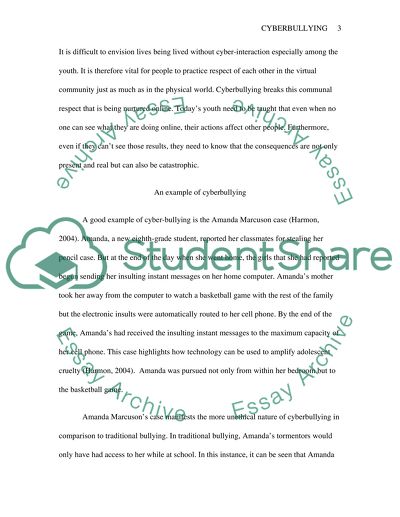Cite this document
(Cyberbullying Case Study Example | Topics and Well Written Essays - 2000 words, n.d.)
Cyberbullying Case Study Example | Topics and Well Written Essays - 2000 words. Retrieved from https://studentshare.org/social-science/1578542-computer-ethics-cyberbullying
Cyberbullying Case Study Example | Topics and Well Written Essays - 2000 words. Retrieved from https://studentshare.org/social-science/1578542-computer-ethics-cyberbullying
(Cyberbullying Case Study Example | Topics and Well Written Essays - 2000 Words)
Cyberbullying Case Study Example | Topics and Well Written Essays - 2000 Words. https://studentshare.org/social-science/1578542-computer-ethics-cyberbullying.
Cyberbullying Case Study Example | Topics and Well Written Essays - 2000 Words. https://studentshare.org/social-science/1578542-computer-ethics-cyberbullying.
“Cyberbullying Case Study Example | Topics and Well Written Essays - 2000 Words”. https://studentshare.org/social-science/1578542-computer-ethics-cyberbullying.


